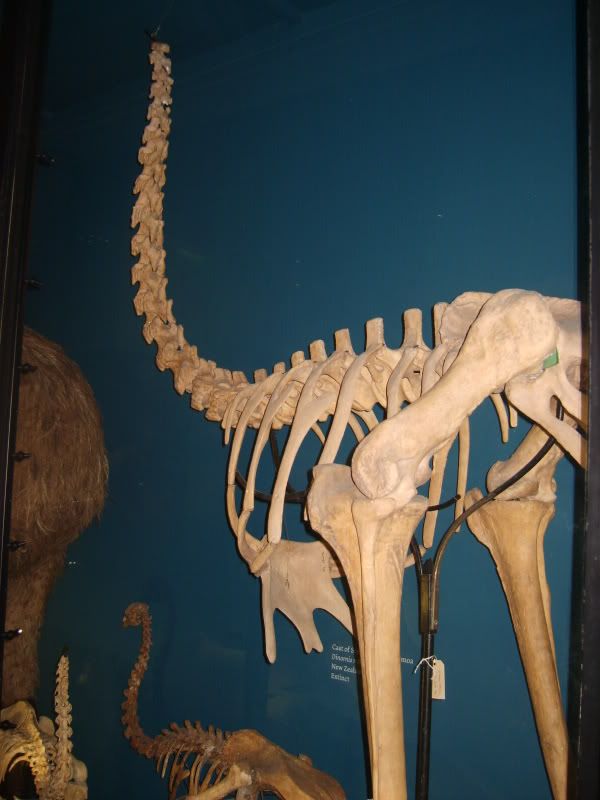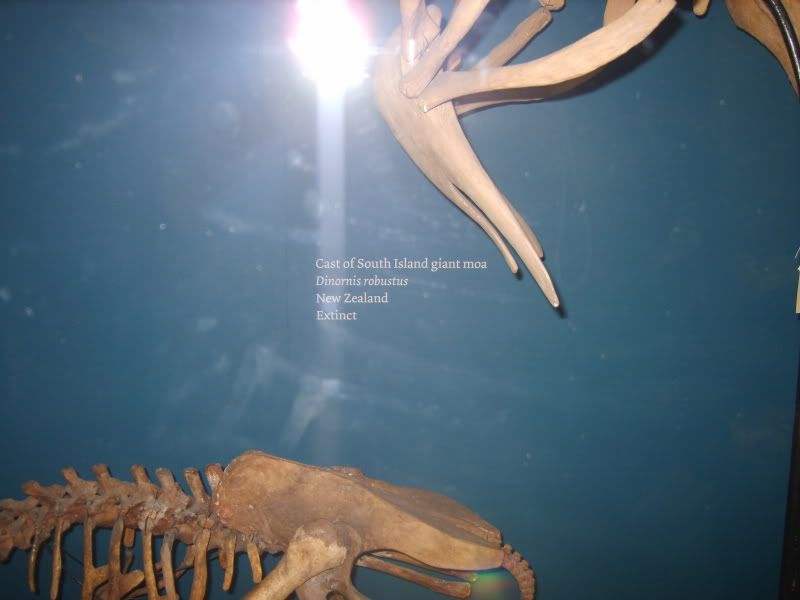|
|
Post by Carlos on Jan 2, 2007 12:12:56 GMT
|
|
|
|
Post by another specialist on Jul 24, 2008 15:34:08 GMT
 Extinct birds : an attempt to unite in one volume a short account of those birds which have become extinct in historical times : that is, within the last six or seven hundred years : to which are added a few which still exist, but are on the verge of extinction (1907) |
|
|
|
Post by another specialist on May 1, 2009 11:31:27 GMT
My own photos taken in the Natural History Museum at Tring - April 30 2009   |
|
|
|
Post by another specialist on May 1, 2009 12:01:16 GMT
My own photos taken in the Natural History Museum at Tring - April 30 2009   |
|
|
|
Post by surroundx on Mar 3, 2013 10:45:04 GMT
|
|
|
|
Post by surroundx on May 8, 2014 7:07:12 GMT
Zinoviev, A. V. (2013). Notes on the pelvic musculature of Emeus crassus and Dinornis robustus (Aves: Dinornithiformes). Paleontological Journal 47(11): 1245-1251. [ Abstract] |
|
|
|
Post by surroundx on May 7, 2015 4:50:47 GMT
McCallum, J., Hall, S., Lissone, I., Anderson, J., Huynen, L. and Lambert, D. M. (2013). Highly Informative Ancient DNA ‘Snippets’ for New Zealand Moa. PLoS ONE 8(1): e50732. |
|
|
|
Post by surroundx on May 7, 2015 9:01:23 GMT
Allentoft, M. E., Scofield, R. P., Oskam, C. L.,Hale, M. L., Holdaway, Richard N. and Bunce, M. (2011). A molecular characterization of a newly discovered megafaunal fossil site in North Canterbury, South Island, New Zealand. Journal of the Royal Society of New Zealand 42(4): 241-256. |
|
|
|
Post by surroundx on Jun 8, 2015 14:07:30 GMT
Ancient DNA microsatellite analyses of the extinct New Zealand giant moa (Dinornis robustus) identify relatives within a single fossil siteAbstract By analysing ancient DNA (aDNA) from 74 14C-dated individuals of the extinct South Island giant moa (Dinornis robustus) of New Zealand, we identified four dyads of closely related adult females. Although our total sample included bones from four fossil deposits located within a 10 km radius, these eight individuals had all been excavated from the same locality. Indications of kinship were based on high pairwise genetic relatedness (rXY) in six microsatellite markers genotyped from aDNA, coupled with overlapping radiocarbon ages. The observed rXY values in the four dyads exceeded a conservative cutoff value for potential relatives obtained from simulated data. In three of the four dyads, the kinship was further supported by observing shared and rare mitochondrial haplotypes. Simulations demonstrated that the proportion of observed dyads above the cutoff value was at least 20 times higher than expected in a randomly mating population with temporal sampling, also when introducing population structure in the simulations. We conclude that the results must reflect social structure in the moa population and we discuss the implications for future aDNA research. Source: Allentoft, M. E., Heller, R., Holdaway, R. N. and Bunce, M. (2015). Ancient DNA microsatellite analyses of the extinct New Zealand giant moa (Dinornis robustus) identify relatives within a single fossil site. Heredity. doi:10.1038/hdy.2015.48 [ Abstract]
|
|
|
|
Post by surroundx on Oct 20, 2015 11:29:11 GMT
Wood, Jamie R., Rawlence, Nicolas J., Rogers, Geoffrey M., Austin, Jeremy J., Worthy, Trevor H. and Cooper, Alan. (2008). Coprolite deposits reveal the diet and ecology of the extinct New Zealand megaherbivore moa (Aves, Dinornithiformes). Quaternary Science Reviews 27(27-28): 2593-2602. |
|
|
|
Post by surroundx on Jan 21, 2016 12:24:57 GMT
Attard, M. R. G., Wilson, L. A. B., Worthy, T. H., Scofield, P., Johnston, P., Parr, W. C. H. and Wroe, S. (2016). Moa diet fits the bill: virtual reconstruction incorporating mummified remains and prediction of biomechanical performance in avian giants. Proc. R. Soc. B 283: 20152043. |
|
|
|
Post by Melanie on Apr 20, 2017 21:04:50 GMT
A 5 minutes video on the skull of a Moa, Dinornis robustus.
|
|
|
|
Post by surroundx on Aug 1, 2017 10:41:37 GMT
|
|
|
|
Post by surroundx on Jun 4, 2022 0:23:07 GMT
|
|
|
|
Post by Sebbe on Oct 27, 2024 8:22:19 GMT
|
|